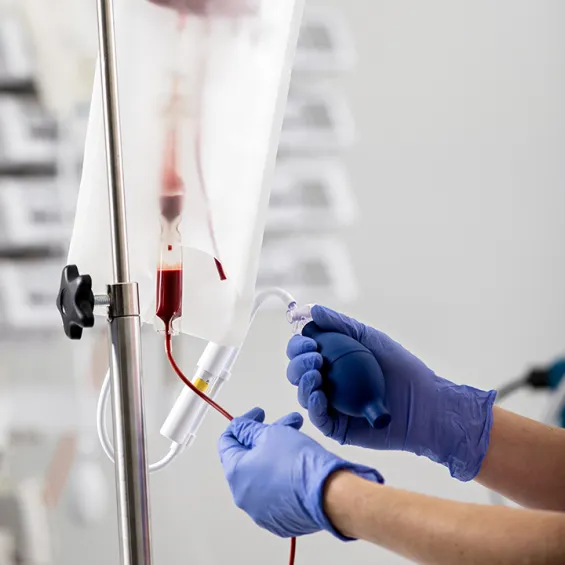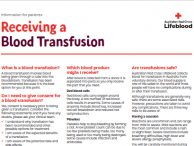Don’t have an account?
Select the donation type you’d like to make
What's involved?
Before your transfusion
Like any medical procedure, you’ll need to have a chat to your doctor about what’s involved and give your consent. This is your chance to find out everything you need to know about the risks and benefits to make an informed decision.
There are many medical conditions or problems that might require a transfusion. Some of the reasons may include cancer, operations, blood problems, pregnancy and birth.
The journey of blood is really incredible – it comes from our generous donors, and passes through our processing centres and labs on its way to you.
During your transfusion
Before the transfusion can begin, a few things need to be checked.
First, the staff need to make sure you are who they think you are. They’ll ask you to identify yourself and confirm that the details are right on your identification band. If they’re not correct, let your nurse or doctor know immediately. Properly identifying you is how they make sure the right blood product goes to the right patient.
Two clinical staff will also check the product itself at your side One of them will start the transfusion. Your health care team will do everything they can to make sure you’re comfortable and understand what's going to happen next.
The transfusion is given through a drip, also known as an IV. It's a soft plastic tube inserted into your vein, usually in your arm. You may feel a prick or stinging sensation when the IV is inserted. The transfusion itself may feel cold, but shouldn’t hurt. Most people don’t feel a thing.
How long it takes depends on your condition. In emergencies, it can be given as fast as your body will allow. Otherwise, one bag of red cells usually takes about two hours. It can take a bit longer, but never more than four hours.
You’ll be carefully monitored, so if you feel uneasy, unwell or notice anything that you didn't have before your transfusion began, let one of the nurses or doctors know immediately.
You need to be aware of transfusion reactions. They can occur during your transfusion or they may be delayed and happen later. Most reactions aren't severe, and can be corrected with minor medical intervention. Look out for symptoms including rash, itching, hives, difficulty breathing, nausea, vomiting, chest pain, irregular heartbeat, high temperature, pain at the needle site, dark or decreased amount of urine, chills, or shaking.
After your transfusion
Like every part of the transfusion, it entirely depends on what blood product you received and why you received it. For example, if you had a red cell transfusion because you had symptoms of anaemia like shortness of breath, you should feel better after your transfusion. If you don't feel better, or if you feel worse, then you need to speak with your doctor or nurse.
You may not feel any different after a transfusion of some blood products like platelets or plasma, especially if they were given to you to prevent a problem.
It’s important to record that you have received a blood product and if you had a reaction to it. You'll be asked next time you go to hospital. Keep it with any other medical details, like your medication list and other medical details.
If you’re going home after your transfusion, make sure you know how to contact the hospital or doctor in case you start to feel unwell.

















